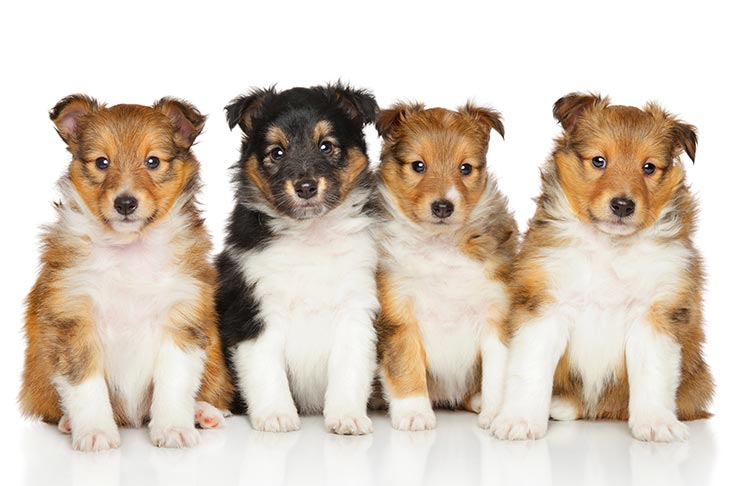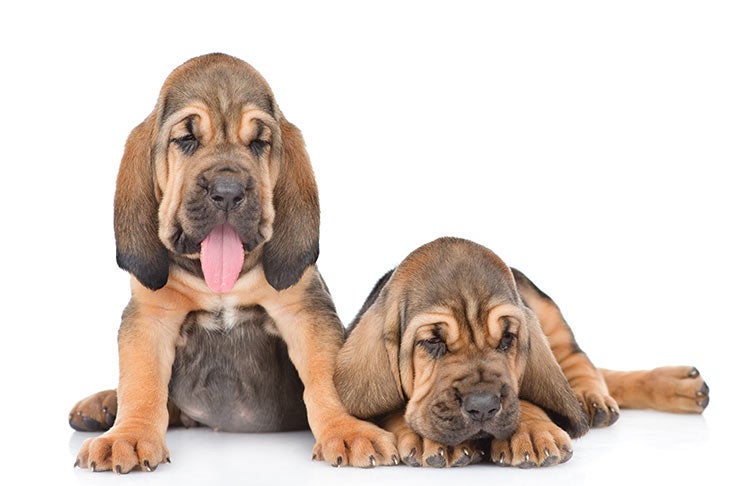Clubs Offering:
Among inexperienced dog seekers, one question looms early in the process of finding that perfect puppy. Pet or show dog? This is an inquiry often asked by breeders, but you may find yourself wondering, “how should I know?”
Of course, every puppy will fulfill that first category as a loyal companion. And hopefully, they’ll be a part of your family for many years to come. But, while breeders are gratified to see their puppies going to loving homes, that’s not the sole reason they are breeding. If they are serious about purpose-bred dogs, they’ll always be looking ahead to the new generation that will bring their family of dogs forward.
So, while you’re scrolling through lists of dog names and scheduling your first vet visit, your breeder might be sipping their morning coffee next to the whelping box, trying to divine if the next conformation champion awaits.
Pet-quality and show-quality are labels that breeders attach to their puppies, but they can be fluid. Experienced breeders spend years grading, selecting, and following puppies. This helps learn their growth patterns and develop a baseline for predicting how they will turn out. But, Mother Nature has a particular fondness for curveballs. Sometimes the most promising puppy defies his rosy predictions as an adult, while his gawky, uncoordinated littermate matures into an enviable swan.
Understanding the difference between show dogs and pet puppies – and how breeders arrive at those assessments – can significantly demystify the selection process for many new owners.

The difference between a show dog and pet puppy is the degree to which each meets the standard for the breed. Knowing the standard for the breed you are interested in – and how to interpret it – is vital. Some standards have disqualifications, which prevent such dogs from entering the show ring.
Certain disqualifications result from missing traits that are considered hallmarks of the breed. Examples include the lack of a ridge in a Rhodesian Ridgeback or the presence of a smooth or wavy coat in a Spanish Water Dog. Other times, disqualifications address those traits that evoke an earlier ancestor or blur lines with another breed. For example, any white spot on the shoulder, back of neck, or back or sides of a Pharaoh Hound is a disqualification, so as not to confuse it with its heavily white-marked cousin, the Ibizan Hound. So too are blue eyes in an Alaskan Malamute, to differentiate it from the closely-related Siberian Husky.
Sometimes, a disqualification isn’t immediately identifiable. Some breeds, for example, mandate full dentition, which is a fancy way of saying all their teeth. With Rottweilers and Doberman Pinschers, the absence of two or four teeth, respectively, means a dog is disqualified. However, puppies often don’t have permanent teeth yet when they go to a new home. Therefore, determining show potential in those breeds can be a bit more complex.
Similarly, breeds such as Whippets and Beagles have a disqualification for size. A puppy that a breeder thinks might not grow tall enough – or, conversely, might grow too tall – also could be sold as a pet. And in males of any breed, the absence of one or both testicles is an immediate DQ.
A disqualification is the most obvious reason for a puppy not being show dog material, but it is hardly the only one. Each standard lists dozens of required characteristics. Eyes alone include color, shape, size, set, and depth. But good breeders know how to prioritize faults. So, what may seem a big deal, because it’s in the standard, may not be from a showing perspective. An eye for that important but equally intangible quality – overall balance – can take years to develop. All the more reason to trust in an experienced breeder to explain why a certain puppy is destined as a show dog instead of a full-time couch guardian.
Predicting how a puppy will turn out is an inexact science, but good breeders have a knack for such things. For this reason, it’s likely that your breeder will select your puppy for you. Other than show-versus-pet quality, the breeder will also take into consideration the puppy’s temperament. Also, what will work best with your lifestyle and family configuration. Naturally, a puppy suitable for young, active couples will be different from one that goes to an elderly owner.
Because puppies go through dizzying growth spurts, many breeders wait until seven or eight weeks of age or later to make final determinations about which puppies are destined for the show ring. Some have formal evaluation sessions, inviting other breeders they respect to have a look and render an opinion. Try to be patient, and as soon as the breeder has figured out who goes where, you’ll know, too.

The difference between pet-quality and show dog potential often has an impact on price, with the latter logically being costing more. But this isn’t always the case. Putting aside that once-in-a-lifetime superstar, some breeders charge the same price for both pet and show prospects. Even if there are two price tiers, the difference between them is usually not very significant.
While people toss around the term “pick of the litter,” it’s all too often meaningless. That much-touted puppy’s only comparison is its littermates, who may not be anything to write home about. Ironically, the bottom-ranked pet puppy from an extremely high-quality litter could be a better example of the breed than the “pick puppy” from a mediocre litter.
Many breeders sell their pet-quality puppies on a limited registration. This means the puppy can participate in official AKC events like Obedience, Agility, and Rally, among others, but cannot participate in conformation. The logic here is that “pet-quality” means a dog is, in the opinion of its breeder, not a candidate for breeding, and the show ring is the place for evaluating breeding stock. Similarly, if a pet-quality puppy does produce offspring, they cannot be registered with the American Kennel Club.
As you might guess, breeders will place their pet-quality puppies on limited registration in order to prevent unscrupulous individuals from breeding them anyway, against the breeder’s wishes.
A dog’s breeders – but not its owners – are permitted to change a dog’s limited registration to full registration, allowing the dog to be shown and bred. Some breeders ask the owners of pet-quality puppies to see the puppy before it is spayed or neutered to make this determination.
Breeding:
Responsible breeding requires you to focus on your goals to improve your chosen dog breed in multiple areas including performance, health and longevity, temperament, and conformation.
How do you know if you have a good puppy?
Take a good look at each puppy. Puppies should be nice and round, not too fat and not too skinny. Their eyes should be clear, bright and with no crust or discharge. Their ears, nose and teeth should be clean and gums pink.
14 Signs Your Dog Doesn’t Love You (Even if You Think They Do)
You’re proud of your little Pug, even if her legs are a little long and her tail doesn’t actually curl all that much and that one ear wants to stand up… But hey, she’s ADORABLE and she’s your best friend! That’s really all that matters. But how can you tell if your pup is a purebred? Even if your breeder says she’s a purebred and you have the papers to prove it, you may have a mutt!